Product analytics is essential for businesses to succeed in today's market. It helps to analyze customer behavior, understand product usage, and improve user experiences.
Selecting the right product analytics tool that best fits your business needs is crucial. However, choosing the right one can take time and effort, with the availability of product analytics tools taking time and effort.
We will take a look at some popular product analytics tools. As a result, you can understand how to make an informed decision based on your requirements and budget. By the end of this article, businesses will clearly understand the different product analytics tools available and which is the best fit for their business needs.
- What is FullStory used for?
- Pricing of FullStory
- Fullstory Reviews
- FullStory Alternatives
- What to look for in an analytics tool
- Final Thoughts
What is FullStory used for?
FullStory is primarily a product analytics tool with a heatmap feature baked into it. It is a hybrid tool, but FullStory likes to call it a Digital Experience Intelligence Platform (DXI), as you can use session replay and product analytics to get a deeper insight into product usage. Though it has a ton of features, FullStory isn’t a true DXI, as there is a lack of intelligence inside the product.
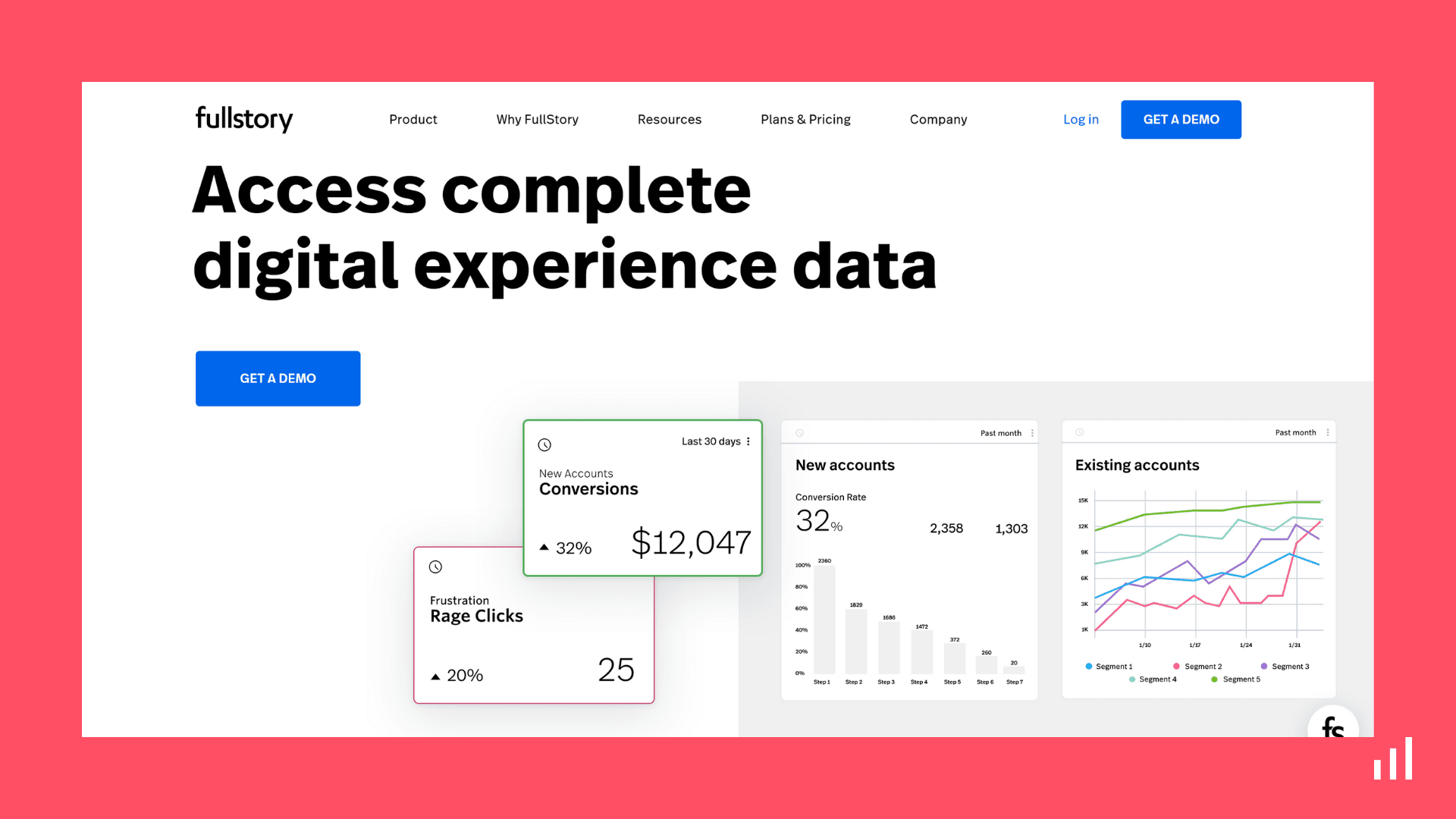
One of the critical benefits of FullStory is its user-friendly interface. So it is easy for users to navigate and get started with the tool. In addition, it has advanced search and filtering capabilities. It also allows users to find and analyze specific interactions or events.
Pricing of FullStory
FullStory offers three pricing plans: Enterprise, Advanced, and Business. The enterprise plan is for those companies which require all-around clarity in their digital folio, and the advanced program caters to those requiring in-depth product pipeline analysis. Finally, the Business suite tends to the needs of those looking to discover trends to enhance their funnel.
Though their pricing isn’t public; however, according to a Capiche and this Twitter thread, the pricing can range in-between $247/month to $850/month based on requirements. They also have a startup program that reduces the price to ~ $1000/year.
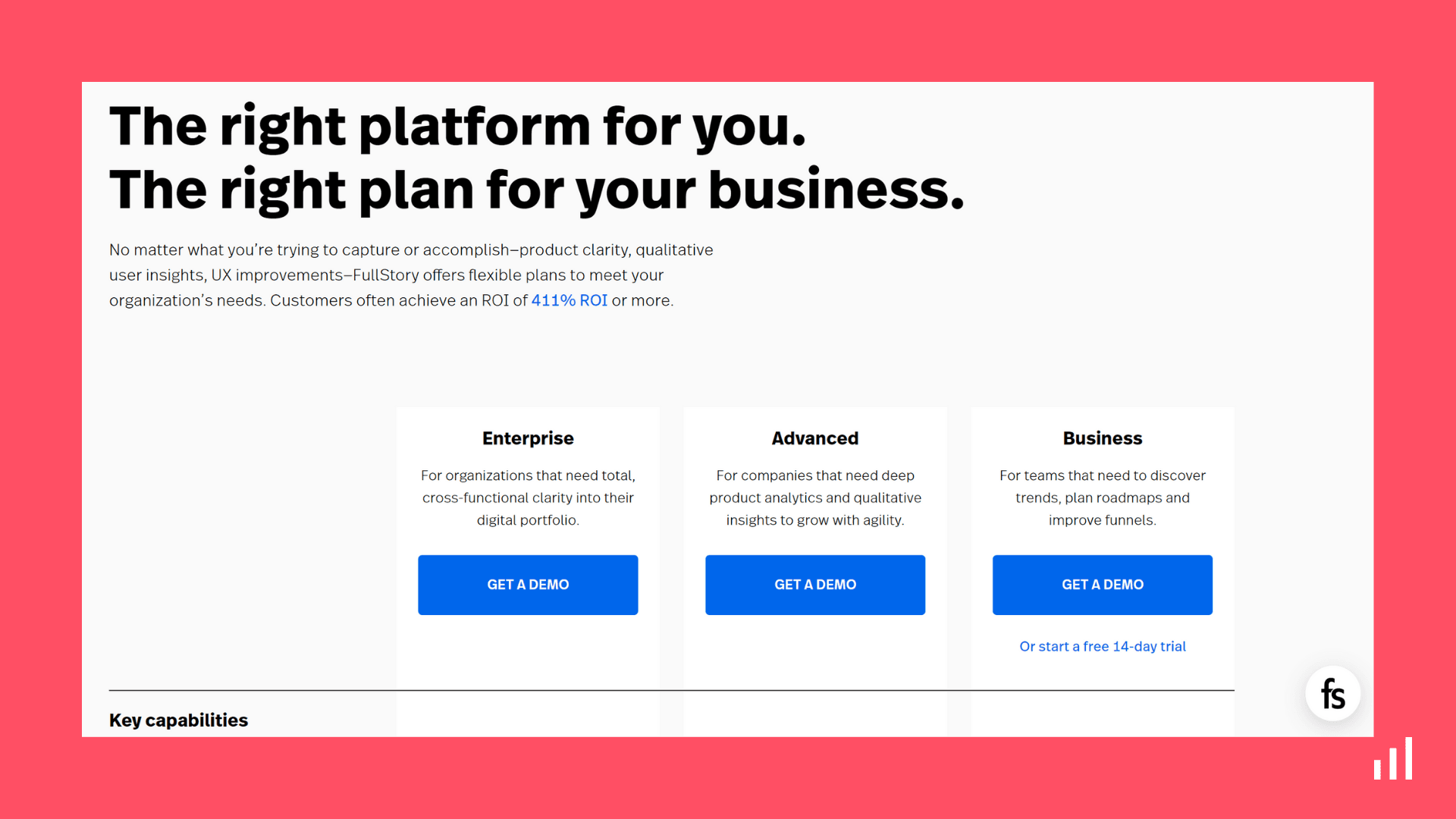
Fullstory Reviews
What do you like best about FullStory?
Fullstory is one of the most innovative session replay tools in the market. Their product analytics, debugging tools, session metrics and search function are among the best in the market. Further, their integration with Intercom and related support tools is powerful and robust.
What do you dislike about FullStory?
The pricing and packaging. FullStory not only charges more than leading competitors, but it also charges a lot more for premium features like conversions, journeys and detections. Plus, beware of their contract renewal terms; it can be confusing.
What problems is FullStory solving and how is that benefiting you?
The main reasons for using Fullstory are
Support tooling for session replay, live troubleshooting
Product analytics to understand key metrics over time and track feature success
Product discovery with heatmaps and funnels to understand user behavior and innovate new products
FullStory Alternatives
Despite its many benefits, FullStory does have some drawbacks to consider. One potential downside is its pricing. In addition, FullStory's integrations are limited to some of the more popular platforms.
This may be a difficulty for businesses using less common tools. FullStory can be overwhelming for new users, as it offers a lot of data and features that may take time to understand and utilize fully.
Let's check out some alternatives.
Simple Analytics
Simple Analytics is a straightforward analytics tool that gives you the insights you need while being 100% GDPR-compliant. It's affordable tool that doubles as a web -and product analytics tool.
Pros of using Simple Analytics
- Simplified UI - Simple Analytics offers a straightforward user interface that makes analysis easier. It's 10x easier to work with than GA4. Checkout the public dashboard to see what that looks like.
- Affordable Pricing - Simple Analytics starts at a reasonable price.
- No cookie banner - Simple Analytics gives you the insights you need without using cookies or trackers. Hence, no need for an annoying cookiebanner on your website.
- Chat with your analytics - Simple Analytics AI is the latest features that lets you chat with your analytics and get insights directly.
Cons of using Simple Analytics
The user interface of Simple Analytics is made to look simple and easy to understand so everyone, be it the founder or marketing teams, can use it easily. A Product Manager may need a few more screens, but that is something that can be quickly built with goals.
Pricing of Simple Analytics
Simple Analytics is one of the most cost-efficient tools available in its segment. The product is perfect for businesses. It caters to companies and has plans for individuals and businesses. Therefore it ensures that the best features are available at a very reasonable price.
The pricing of Simple Analytics starts at a low $9/month, making it a pocket-friendly tool for all businesses.

PostHog
PostHog provides businesses with product analytics that assists in obtaining insights into their user behaviour. It is a GDPR-compliant platform that empowers entities to monitor user interactions and scrutinize data instantly.
Using it, companies can establish personal events to track explicit actions on their website or app, like button clicks or page views. PostHog also integrates with well-known tools like Slack, Segment, and Zapier.
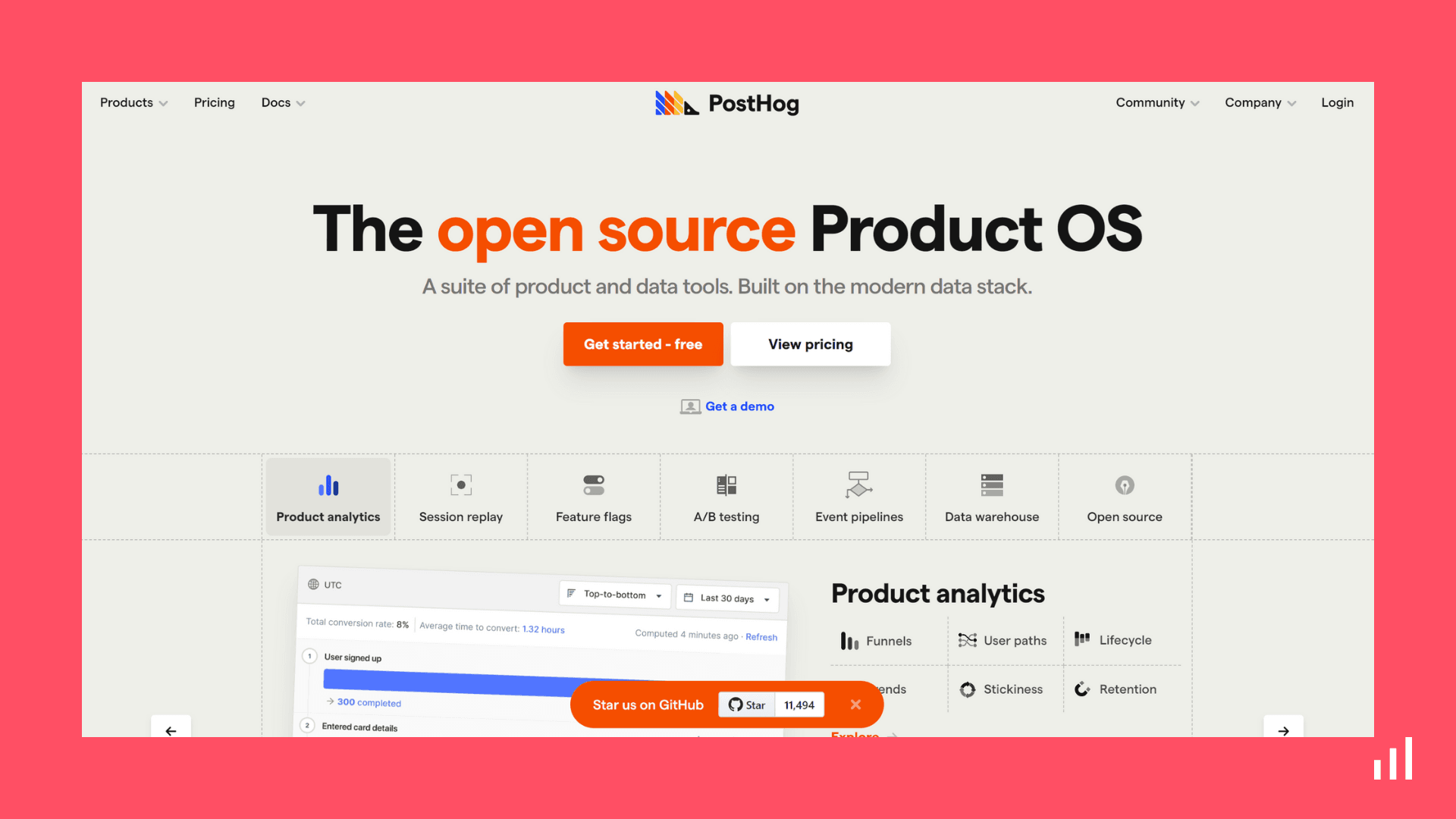
Pros
- Affordable paid plan and generous free plan
- Open-source
- GDPR-compliant
Cons
- Customer support isn’t available for every plan
- Too complex for many
Pricing of PostHog
PostHog offers a paid plan starting at $0.0003068/event and $0.005/recording. There are also custom plans available for larger companies. It’s relatively affordable; however, if you want to have support, you’ll need to upgrade.
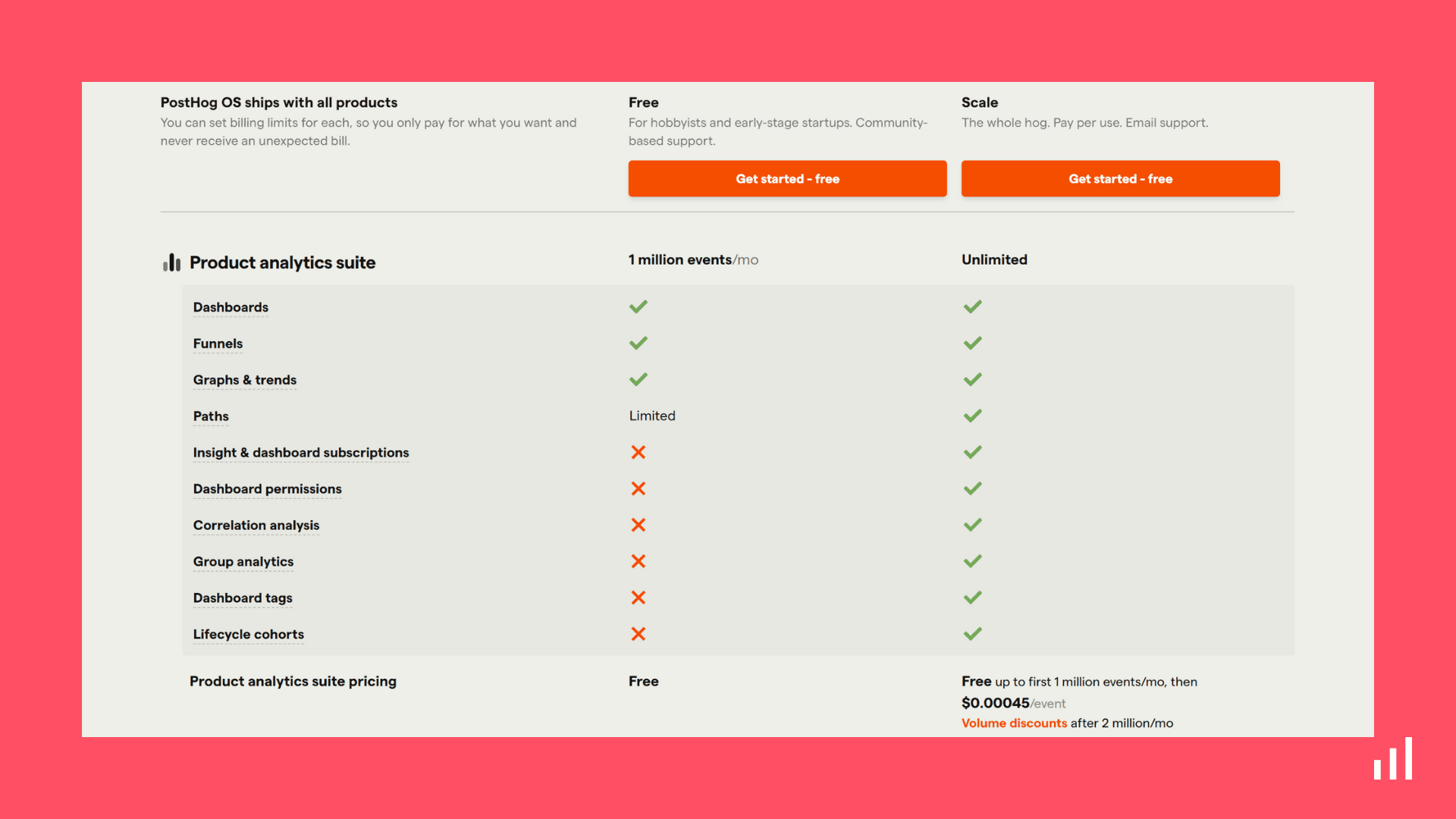
Mixpanel
Mixpanel is one of the most popular product analytics tools out there and is used by companies like Netflix and CNN. The founders of Mixpanel believed that metrics like registered users, page views, and app downloads were just vanity metrics and could have been easily inflated. Mixpanel was built to solve this by providing absolute product clarity with their metrics.
It offers many ways to customize for the unique needs of businesses from different industries. With its customizable dashboard, Mixpanel allows its users a lot of room to keep track of their numbers.
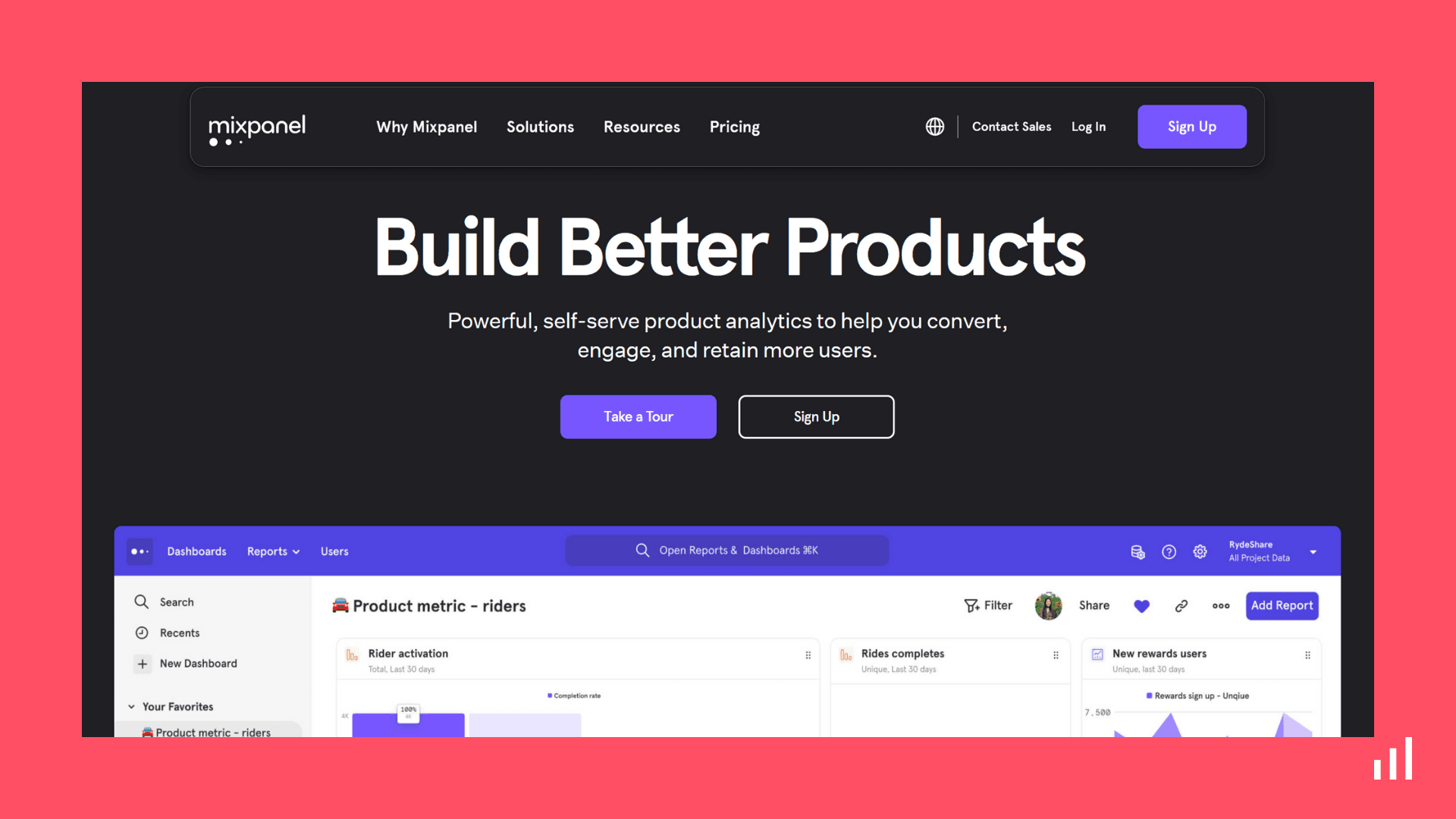
Pros
- Provides in-depth product analytics
- Custom dashboards and charts can be created
Cons
- Using it is hard without dedicated product knowledge
- Expensive for most businesses if all features need to be unlocked
Pricing
Mixpanel offers a variety of pricing plans to suit different business needs, with options for startups, small businesses, and enterprises. Prices start at $20/month for the Growth plan, which includes unlimited reports and data pipeline add-ons. The Enterprise plan starts at a heavy $833/ month and includes advanced machine learning and predictive analytics features.
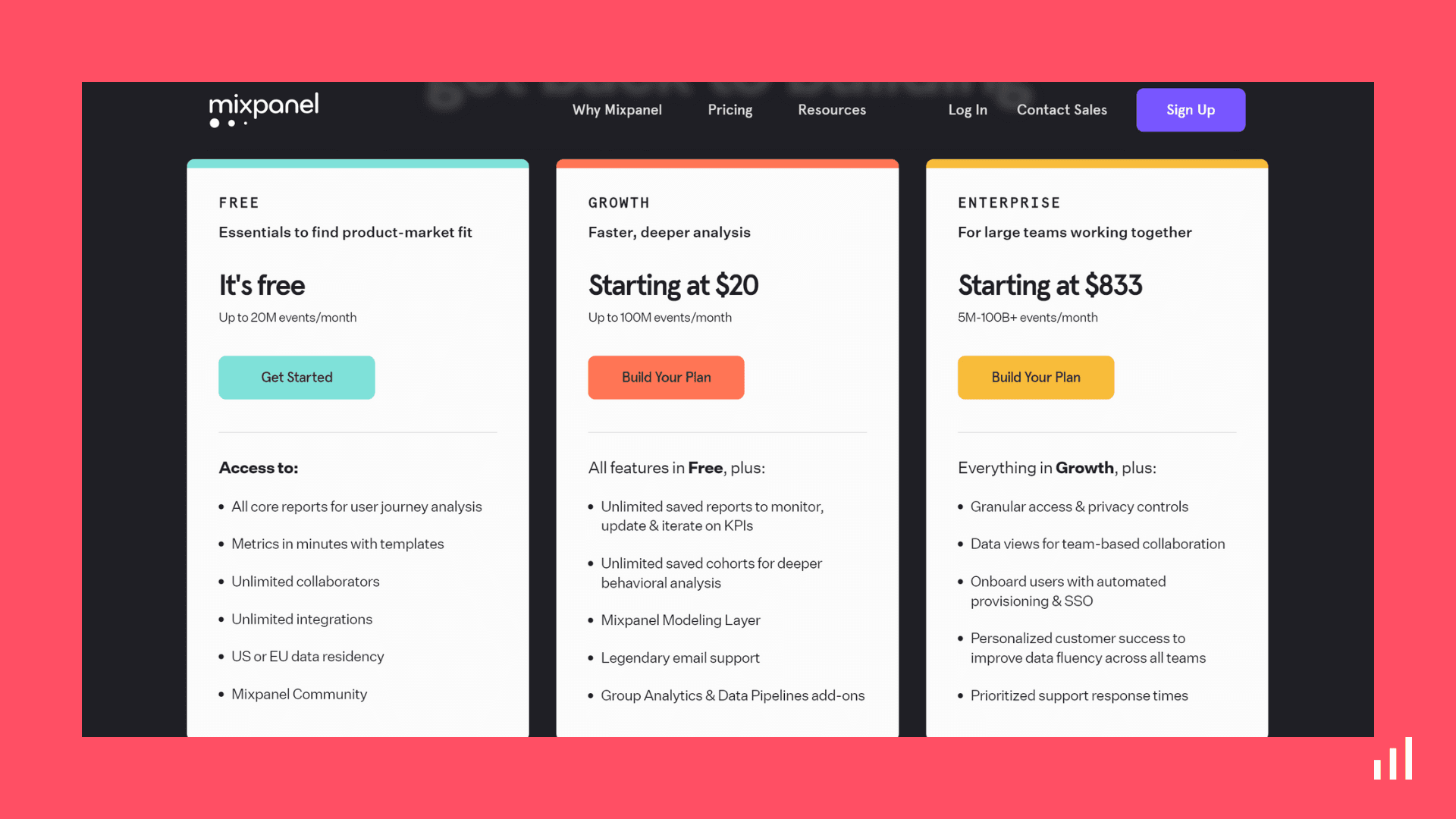
Heap
Heap is a product analytics tool with features like session replay, heatmap, and user journey. Its primary role is to be the single source of truth for all product-related metrics.
Anyone using Heap can customize it as per their requirements, as it allows users to create custom dashboards and charts. Heap is widely used in the industry for funnel optimization and to improve product adoption.
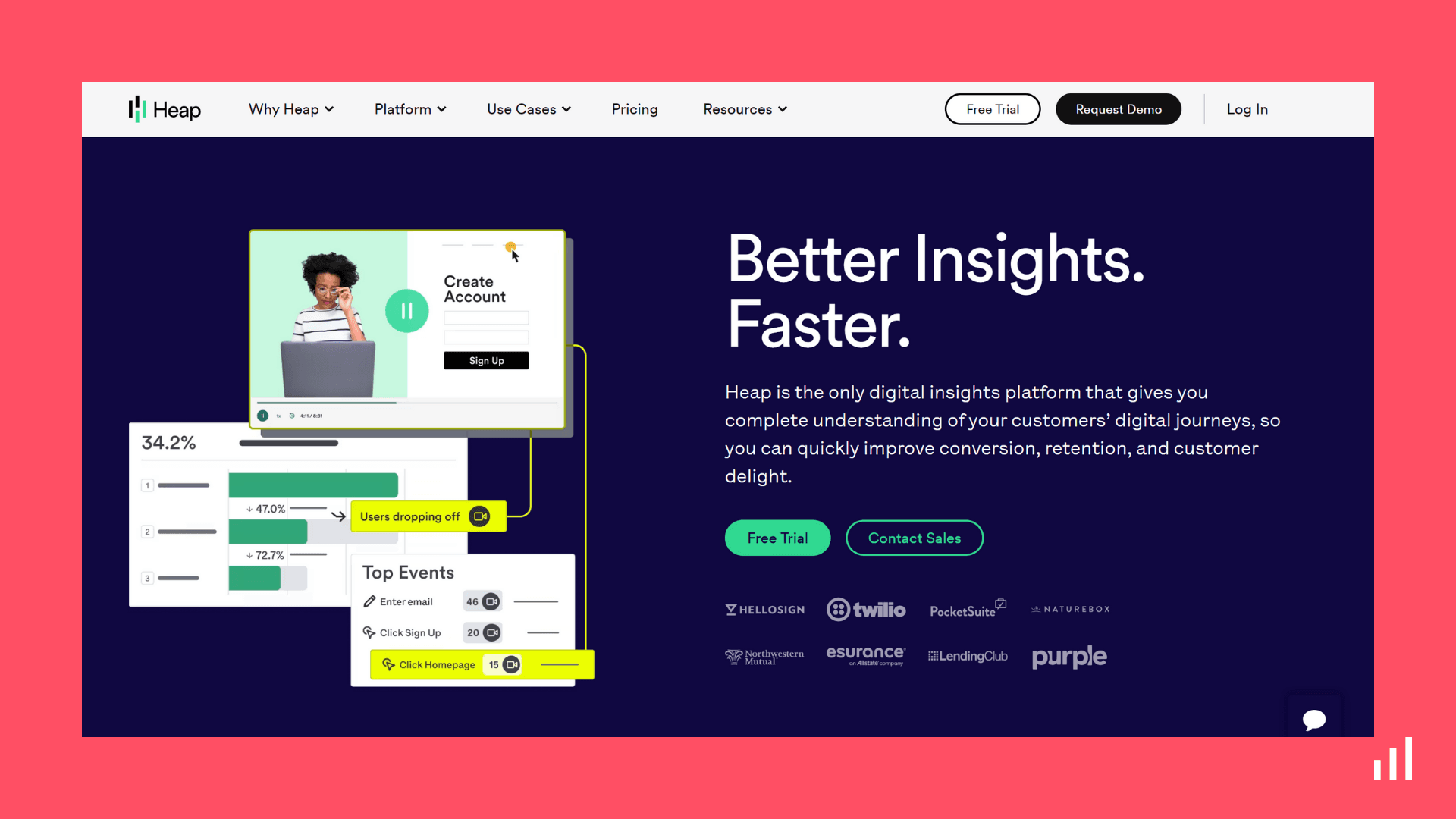
Pros
- Provides data enrichment
- Provides in-depth product analytics
Cons
- Can get overwhelming
- Expensive tool to use
Pricing
Heap is an enterprise-grade software tool with three paid plans, Growth, Pro, and Premier. The pricing isn’t publicly available on their website. However, some review sites say it starts at $3,600/year for 300K sessions/year (25K sessions/month).
Do note that the starting pricing doesn't contain all the features that Heap offers; you’d have to upgrade to a higher plan.
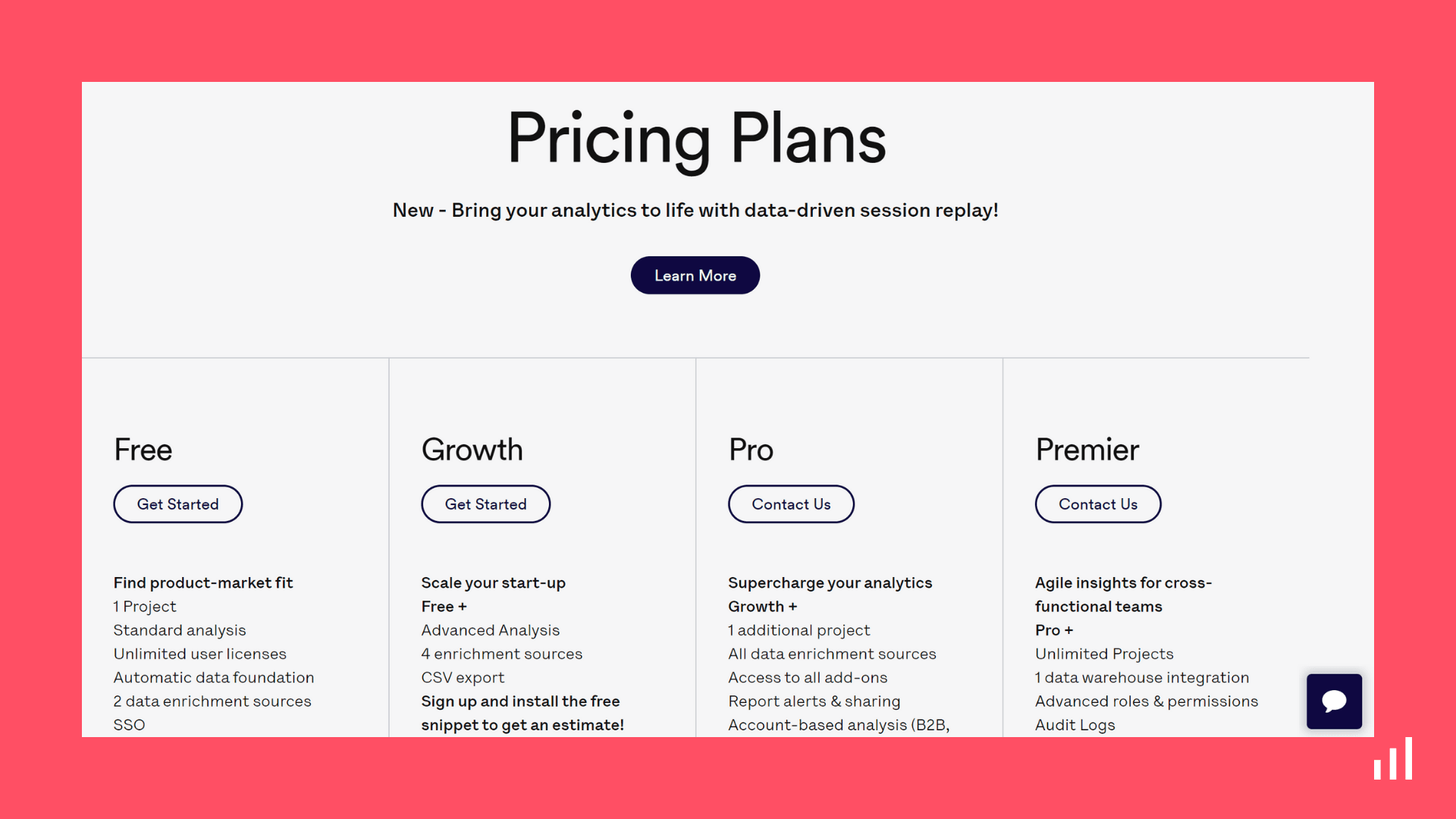
Snowplow
Snowplow is an open-source event analytics tool that collects and analyzes behavioral data and passes the same to business information tools, machine learning models, or for advanced data analytics.
It’s a complex tool specially built for large organizations to make data-driven product decisions at scale.
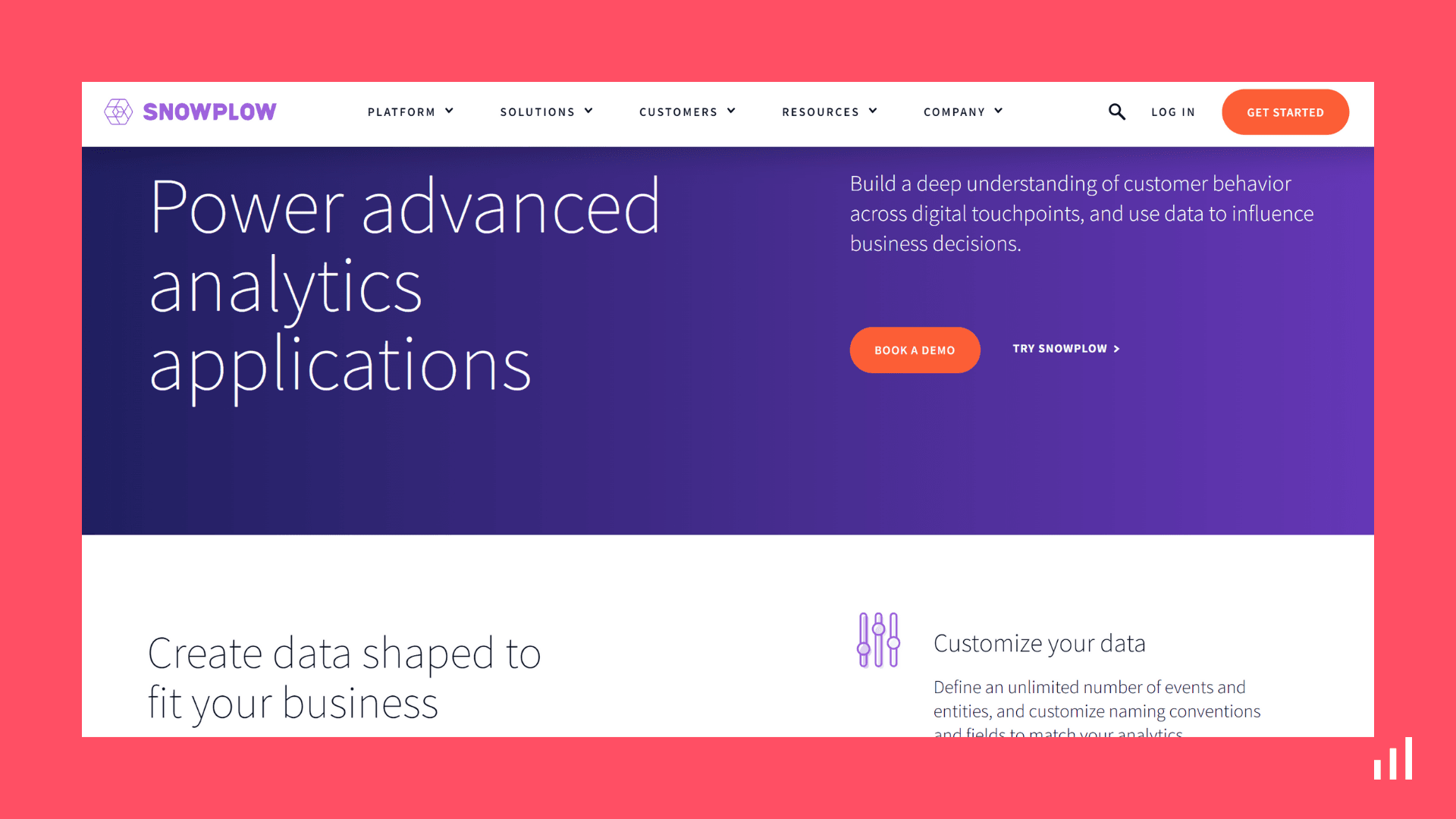
Pros
- Provides accurate data to make decisions.
- Solves the problem of understanding users at scale.
Cons
- Complex, and most users don’t have the resources to implement it
- Requires to be connected to other tools for a complete analytics
- Expensive tool
Pricing
Snowplow is an open-source tool, meaning you can self-host some parts, but their core behavioral data platform pricing starts at $800/month. This pricing might suit large-sized organizations but is unsuitable for most businesses.
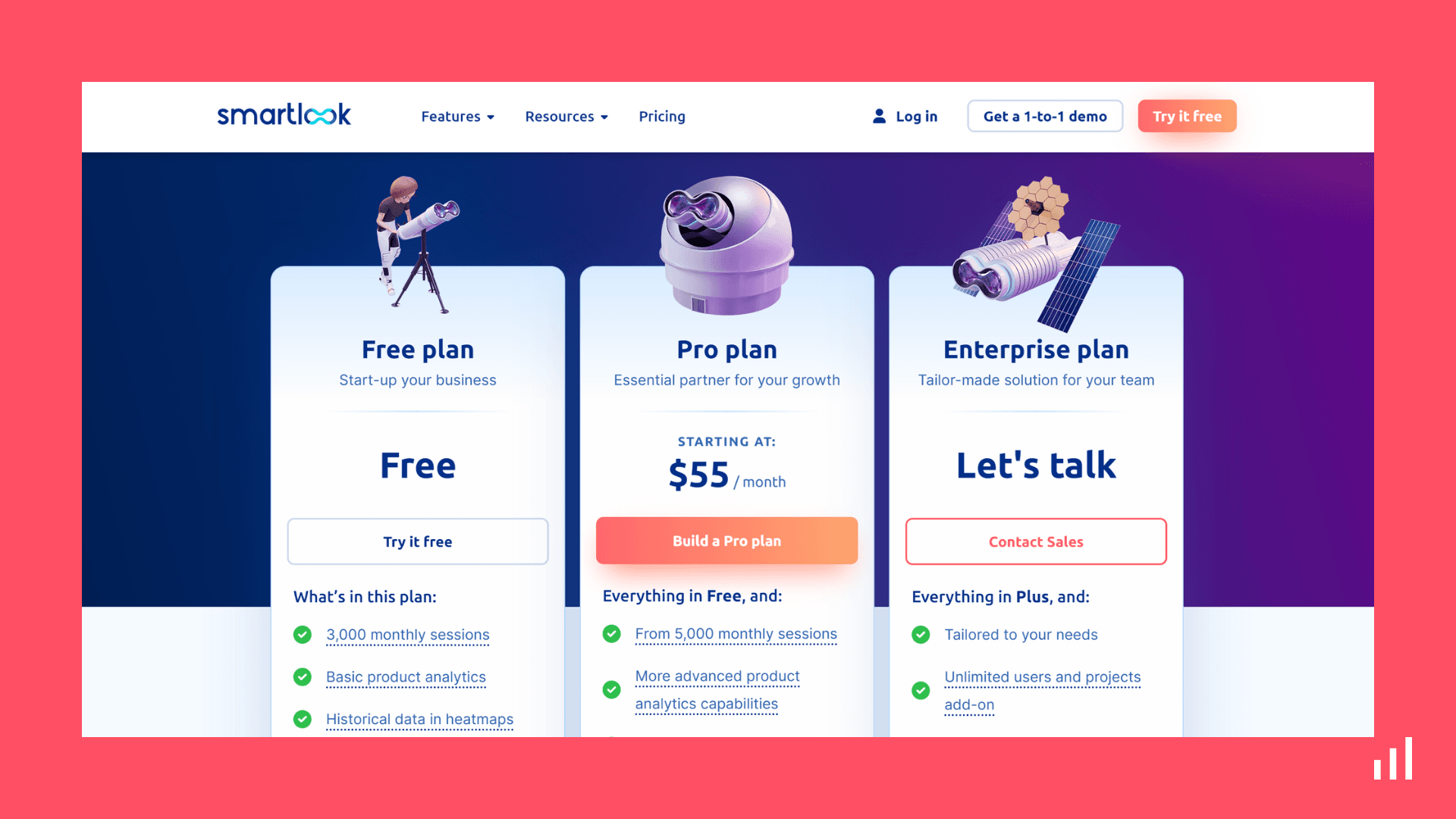
Kissmetrics
Kissmetrics is a product analytics tool that primarily focuses on even analytics. The provided solutions mainly target the analysis of customer behavior. It also focuses on providing data discovery and visualization support on its platform and also tracks keywords. In addition, Kissmetrics is also used for funnel analysis and goal tracking.
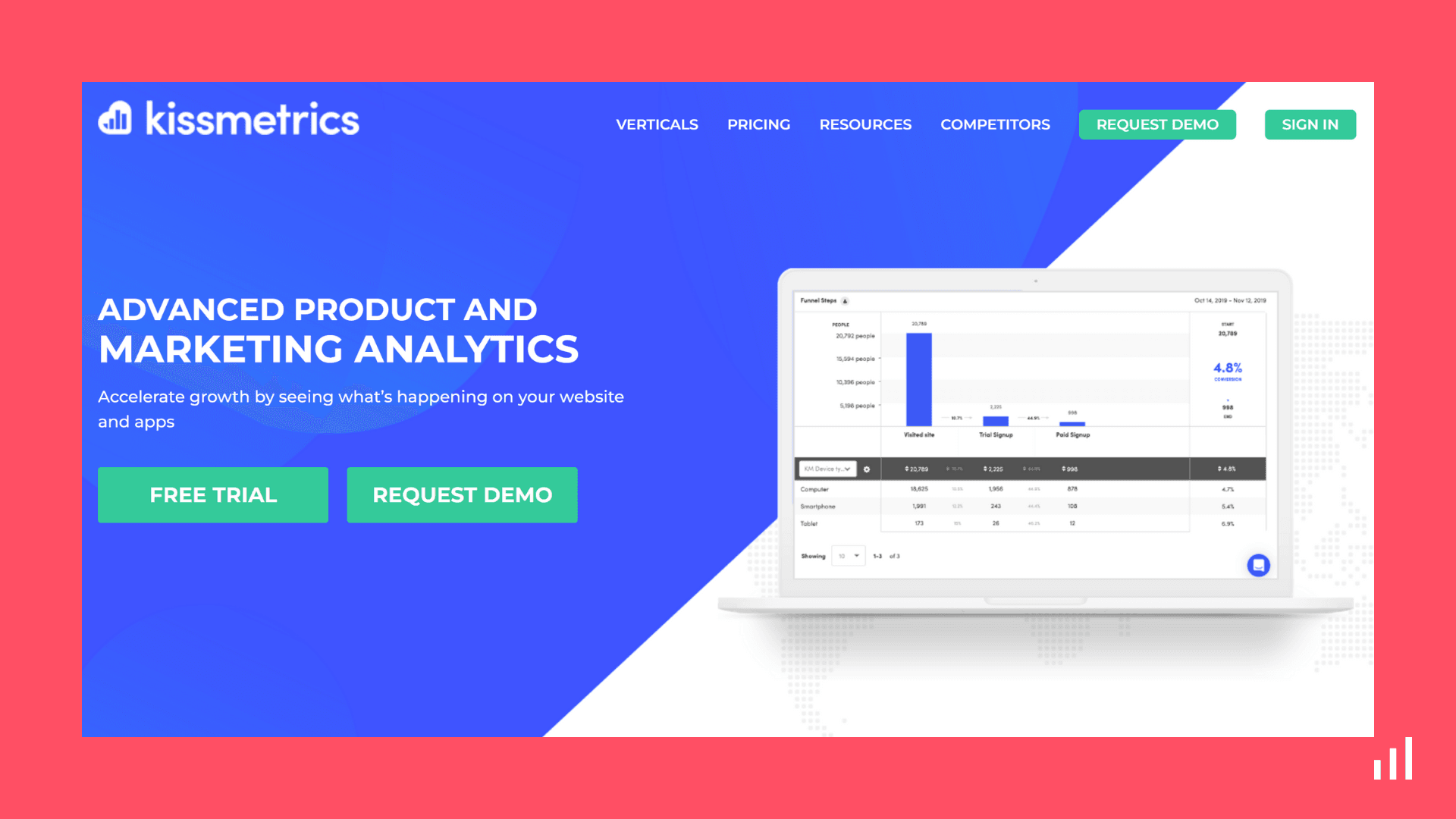
Pros
- Advanced tracking and segmentation capabilities
- Offers powerful automation and engagement tools
- Provides customer journey mapping and funnel analysis
- Easy to integrate with other platforms and tools
Cons
- It can be expensive for small businesses
- The steep learning curve for new users
- Limited reporting capabilities
Pricing
Kissmetrics offers three pricing plans: a Silver plan that starts at $299/month, a Gold plan that starts at $499/month, and a custom Platinum plan. Unfortunately, the price of the enterprise plan is private.
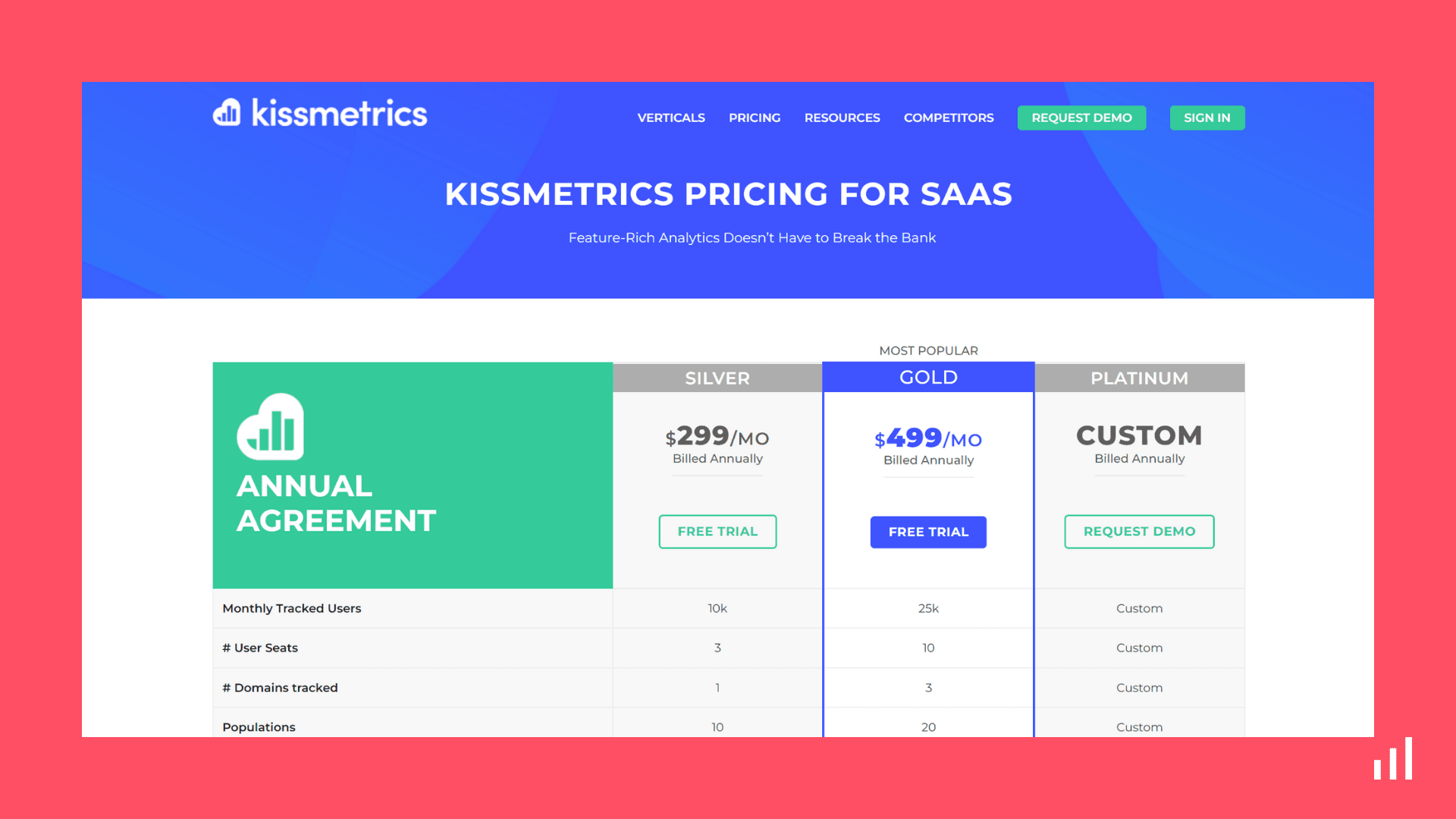
Woopra
Woopra is a customer analytics tool designed to track user journeys from start to end. The data provided by Woopra can be used to understand user journeys, analyze trends and improve user retention. It also comes with additional automation to help engage users in real time.
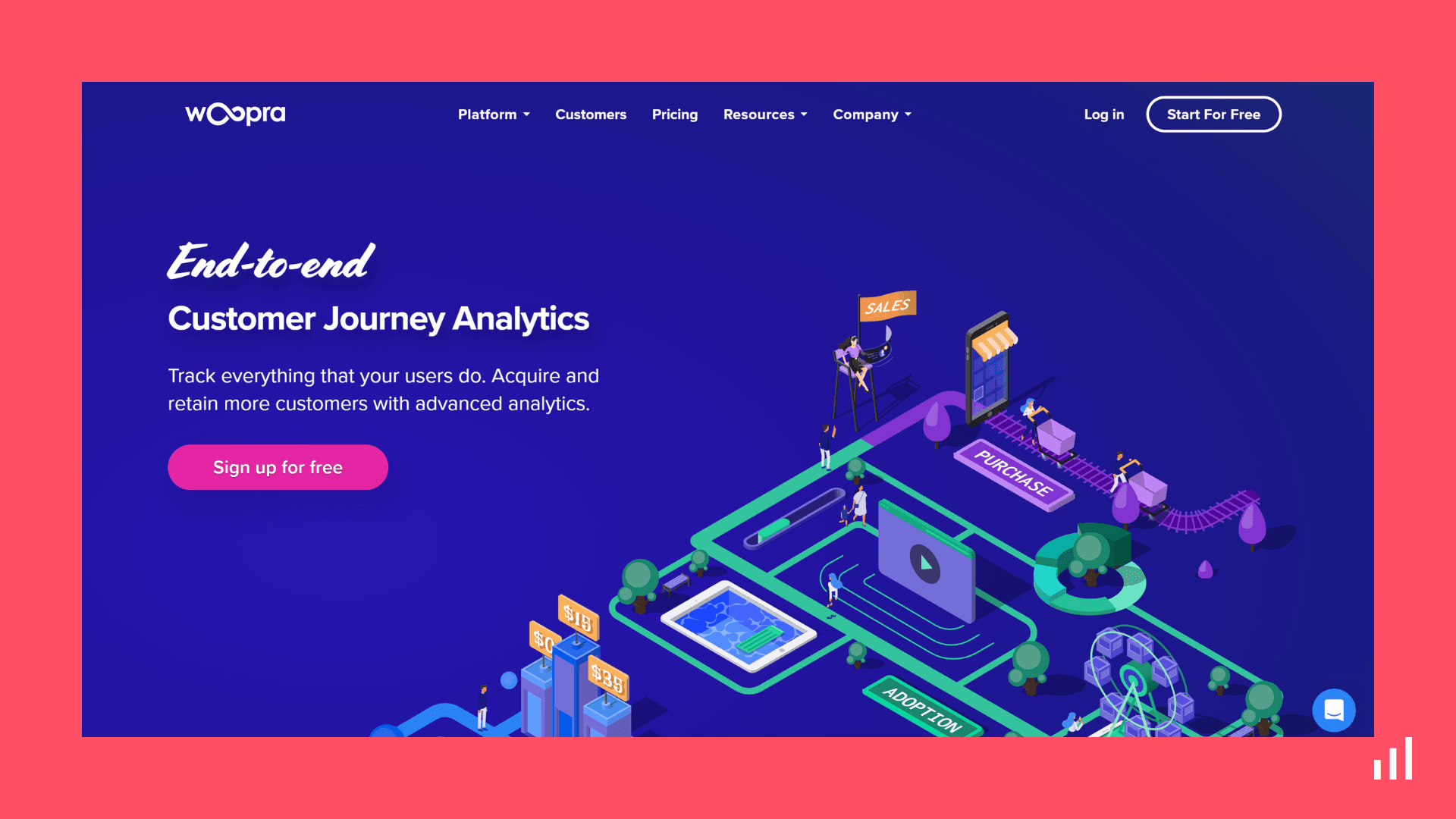
Pros
- Generous free plan
- Supports multiple single-click integrations
Cons
- Poor data retention policy
- Unclear GDPR compliance
Pricing
Woopra offers many plans with varying prices. It has a generous free plan, but if you move to the paid options, most will feel expensive. It starts with the pro plan for $999/month for 5 million actions in the Pro plan. The Enterprise plan goes beyond that, but its pricing is undisclosed.
You can contact the Woopra team and get a quote with pricing depending on the actions tracked per month. For companies requiring even more actions, tailored options are available.
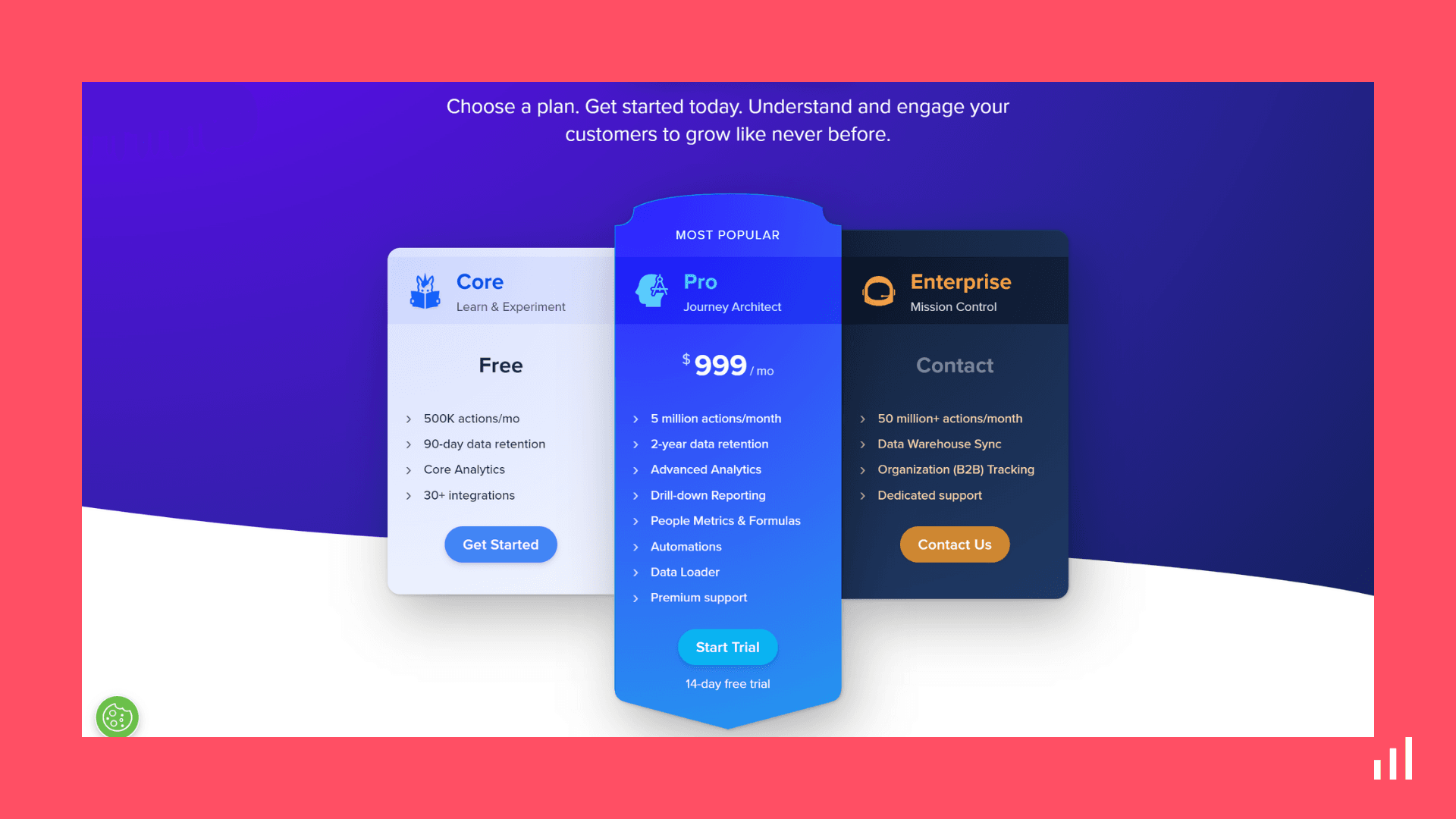
Pendo
Pendo is a product analytics tool that enables product managers to proactively engage with customers and understand how their product is being used. Also, yes, tools like Pendo are better to be used by a PM and not the best choice for solopreneurs or small teams.
It also has many features that help you provide personalized user onboarding and in-app training, which is an added feature of Pendo. Furthermore, these features are available on mobile too

Pros
- Provides additional features such as an onboarding tool for SaaS
- Provides detailed product analytics
Cons
- Too many features make the UI cluttered
- Expensive tool
Pricing
Pendo is a software targeted towards enterprises, which also shows up in its pricing. You’ll have to pay $7000/year for up to 2000 monthly active users.
It’s indeed pricey and certainly not recommended if you are just starting. Better to stick to something affordable and simple.
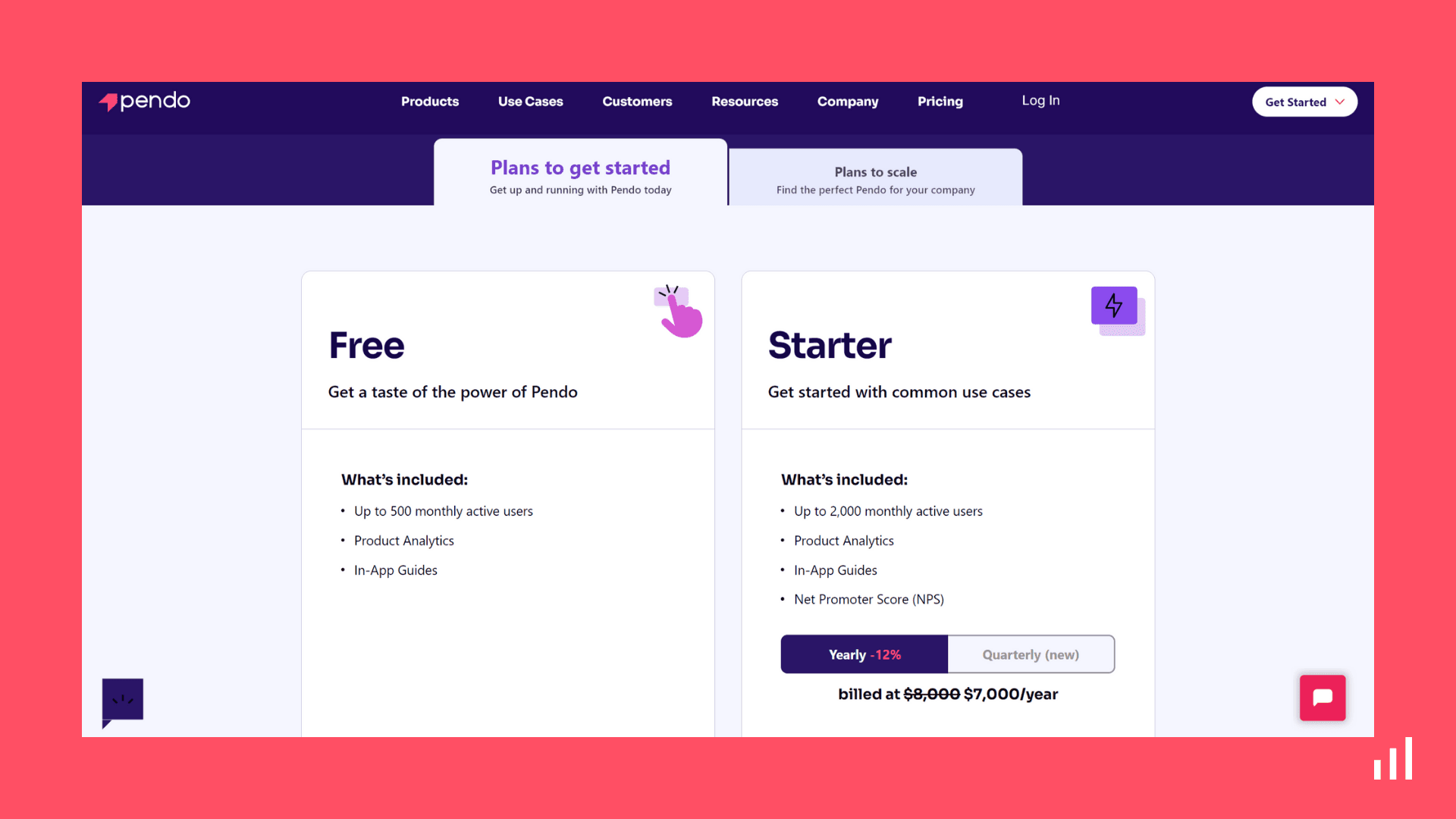
What to look for in an analytics tool
Selecting a tool for your analytics is a crucial decision. Be sure to go through this checklist before making a choice. You're good to go if the tool provides these:
Ease of Use: You shouldn’t spend your time on a complex web analytics tool that takes time and experience to get familiar with.
Accuracy: Getting an accurate picture of what’s happening on your website is important.
Straightforward UI: Most of the time, you don’t need 75 custom dashboards (looking at you, Google).
Lightweight: Installing an analytics script has an impact on your page speed. Choose an analytics tool that doesn’t slow your website down.
Privacy: The world is moving in a direction where privacy is becoming increasingly important.
Integration: Your analytics should be able to integrate with other tools.
Pricing: Consider the tool's pricing and ensure it aligns with your budget.
Although this checklist can assist you in getting started, there may be other factors for your organization that you need to consider.
Final Thoughts
If you want a tool that checks these boxes, then check out Simple Analytics. It provides the insights you need in a straightforward dashboard while being 100% GDPR compliant.
Want to see what that looks like? Check our public dashboard here
We believe the internet should be an independent place that is friendly to website visitors. By opting for Simple Analytics, you’ll be supporting us in our mission and protecting the privacy of your website visitors. If this resonates with you, feel free to give us a try.
